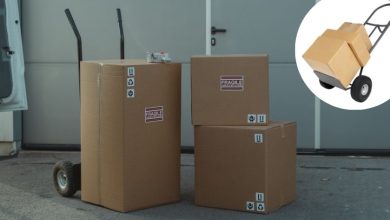Preparing Your Vehicle for Enclosed Auto Transport: Essential Tips

Shipping your car across the country? Making sure it’s ready for the trip is essential. Enclosed auto transport can fully surround your car in a protected trailer. This keeps it safe from weather, road hazards, and damage while it travels long distances.
But first, you need to get your car ready for the journey. This means cleaning out any trash so the truck driver can inspect it. Check the tires and fluids so nothing leaks or goes flat during the drive. Gather registration paperwork they may need to see as proof it’s your car. Oh, take good “before” pictures showing the current condition – just in case!
It may sound boring, but this prep work matters. It makes loading smooth and keeps your car safely secured inside the trailer once on the road. No one wants dirt flying in through cracked windows! We want your car to arrive as lovely as when it left. So let’s go over the key steps to get it road trip ready… then the enclosed trailer can wrap it in a protective bubble, keeping troubles away while you miss your car less, knowing it’s shielded. Read this, and you’ll be prepped for success!
What is Enclosed Auto Transport?
Enclosed car shipping is a method that transports vehicles protected inside fully covered trailers; unlike open car carriers, which load vehicles uncovered on flatbeds, enclosed trailers surround vehicles inside secure containers built with rigid sidewalls and complete roofs made of aluminum, steel or composite panels. This shields them from road hazards and elements like dust, rain, hail, and UV rays that open shipping exposes vehicles to during transit. With high-strength panel walls and ceilings covering all sides, vehicles transport inside climate-controlled capsules – cocooned safely from exterior risks.
Benefits of Enclosed Auto Transport
Enclosed trailers deliver numerous benefits for vehicle safety and protection compared to primary open auto carriers:
- It protects from weather damage like rain-eroding paint finishes or hail-denting sheet metal.
- Blocks road debris like gravel and stones, which can chip paint and crack glass.
- Filters out harsh sunlight to avoid UV damage and interior fade risks over time.
- Maintains stabilized climate inside so heat and cold do not detrimentally impact vehicles or interiors.
- Reduces road vibration and jostling transmitted to transported vehicles.
- Provides advanced security features like interior cameras and GPS tracking systems to monitor vehicle status.
- Allows specialized bespoke handling by white glove services focused on high-end vehicle needs.
Key Reasons to Pick Enclosed Transport
So why spring for more expensive enclosed auto shipping instead of essential open transport?
The barriers and compartmentalization endemic to capped enclosed trailers deliver vital advantages that make them worth the price premium for owners transporting prized vehicles or those requiring ultimate safety:
- Minimizes weather and road debris that harms vehicles and erodes conditions.
- Defends against theft with monitoring and high-security doors.
- Shelters, finishes, and materials against UV rays that age assets prematurely.
- Regulates climate reliably to avoid heat/cold extremes’ interior and component stress.
- Suspends vehicles away from flatbeds so they ride smoother with less vibration.
- Enables bespoke white glove vehicle manipulating catering to fragile collectible autos.
For customers transporting high-value, unique, antique, customized, or otherwise delicate vehicles, enclosed shipping barriers provide protections decisive to preserving optimal vehicle integrity. Open carriers need help replicating comprehensive environmental regulations and vehicle monitoring over thousands of highway miles. So, for those needing to cocoon their prized automotive possessions to arrive safely sheltered, enclosed trailers deliver essential, specialized defenses at a fair value.
Preparing Your Vehicle for Enclosed Shipping: A 10-Step Guide
When enclosed auto carriers arrive to transport your cherished car, truck, or SUV, your vehicle must arrive prepared for the journey. Key road-readiness steps optimize security and evidence protection once loaded. Follow this essential 10-step checklist to hand off your asset ready for the trailer conveniently.
Step1: Clean Inside and Out
Start by thoroughly cleaning your vehicle so even minute exterior or interior flaws get documented. Wash, wax, and detail the exterior so the paint looks polished. Remove all interior contents, from floor mats to infotainment SD cards. Shampoo upholstery or carpets and clear out trunks/cargo areas completely. Professional detailing generates the most apparent pre-shipping records when identifying potential future damage claims.
Step2: Check Fluid Levels
Refresh all vital fluids to sufficient “Full” levels per dipstickdipstick before loading to avoid roadway leaks or internal spills during shipment. This includes:
- Engine oil
- Transmission fluid
- Coolant
- Brake fluid
- Power steering fluid
- Washer/wiper fluid
Topping off liquid reservoirs minimizes dangerous low-fluid warnings appearing mid-transit and reduces road grime buildup in compartments, which supports longevity.
Step3: Inspect & Set Tire Pressure
Examine tread depths and sidewalls closely for embedded objects or surface cracks needing repair while rotating to equalize wear patterns between axles. Then, utilize an accurate pressure gauge to fill each tire to the PSI rating listed by the door placard sticker when cold – NOT the highway-optimized PSI molded into tire sidewalls. Improper inflation strain sidewalls alter vehicle handling and risk dangerous blowouts or tread separations if neglected.
Step4: Photograph Vehicle Condition
Next, photograph your entire vehicle, capturing all sides, angles, and close-ups of existing exterior flaws with doors/hood open to memorialize the current status. Download images directly to a computer for safe dated timestamps rather than only camera media for easy reference later. Clear “before” images protect against fraudulent damage claims and speed up resolution for legitimate issues.
Step5: Check Charging & Light Systems
Safe operation requires functional lighting, so inspect all external bulbs and blinker lenses while testing dashboard alerts and dial illumination to catch any burnt-out elements for swift roadside trailer access when needed internally. Identify charging system faults now, which strand vehicles mid-shipment if neglected.
Step6: Gather Paperwork
Have current vehicle registration, license plates, title, and insurance documents accessible for proof of ownership and coverage required during transit to new regions meeting legal mandates. Some enclosed shippers offer supplemental cargo insurance options as added owner protection, too, if desired for high-value collectibles.
Step7: Ready Accessories
Detach any removable electronic toll passes from windshields to avoid triggering fees throughout new states when enclosed trucks utilize associated roads en route. Remove rooftop storage pods, mounted bike racks, dangling license plate backs, or other tied-down cargo that risk flying off at interstate speeds after being rattled loose while in motion.
Step8: Check Lights, Alarms, Locks
Test all key fob locking and unlock functions for responsiveness, ensuring alarm chirps activate as expected to indicate activations if the trailer cargo area remains unmonitored for stretches of noisy highways where alerts get drowned out external to the cab interior.
Step9: Record Odometer Photo
Finally, insert your key fob without starting the engine and cycle to the odometer screen, capturing a date-stamped image of the current mileage logged for reference, ensuring no tampering or accidental moves occur mid-transit. Email files to the transport company to cover yourself.
Legal and Documentation Requirements
The carrier will need the following paperwork to verify registration and that you legally own the vehicle:
- Current vehicle registration
- Valid insurance card
- Vehicle title with owner name
- Driver’s license or photo ID
- DMV purchase/sale records
- Lien release documents
Review insurance policies to understand coverage exclusions, limits, and deductibles – your auto policy and the transport company’s cargo coverage. Some enclosed shippers offer supplemental insurance options as well.
Confirm all documentation proves current legal vehicle ownership and applicable insurance protections are active throughout the shipping duration in case claims arise later. Accurate paperwork demonstrates readiness to ship compliantly and facilitates faster loading and processing.
Choosing the Right Enclosed Auto Transport Company: Crucial Tips
Not all vehicle transporters provide equal care and protection. With your prized automobile at stake, selecting a reputable transport company demands research into critical qualities well beforehand. Consider these decisive factors when evaluating potential enclosed auto carriers:
Insurance Coverage
First and foremost, scrutinize insurance plans thoroughly, inquiring about cargo, damage, and liability limits. Review what claim types get excluded, too. Required minimums may not match risk costs for six-figure vehicles. Custom “excess value” coverage matters more here. Never assume adequate protection – verify details upfront.
Trip Monitoring Capabilities
Modern trailers offer far more than four walls and a ceiling to monitor freight effectively. GPS vehicle tracking and interior/exterior mounted cameras now help ensure transparent visibility and accountability during transit for owners concerned about vehicle handling practices. Probe such capabilities.
Experience Transporting Valued Assets
For exotic, classic, race, or show vehicles, select transporters specializing in high-value auto shipping with verifiable experience navigating such vehicles’ sensitive handling demands. General experience may prove inadequate to need specifics.
Equipment Quality & Maintenance
While adverts showcase shiny truck images, old and weathered trailers still dot highways daily, so don’t assume such depictions equal current fleet quality. Inquire about routine modernization investments that reflect enduring commitments to premium equipment and preventative maintenance for electrical, suspensions, heating, and cooling systems that impact protections delivered.
Status Communication Systems
Multi-day cross-country trips can spark understandable owner unease on progress, and ETA communication sometimes needs to be more apparent by transport brokers. Yet modern connectivity now facilitates direct owner communication with drivers via calls, texts, and transport apps linked to in-cab GPS displays that provide realistic updated statuses unfiltered by third parties. Probe such capabilities.
Contingency & Emergency Protocols
Despite best efforts, unplanned disruptions still thwart transport routes, demanding contingency protocols to shelter vehicles in such events securely. Verify emergency roadside response protocols should disablements leave your vehicle stuck mid-transit to accelerate certified assistance. Don’t assume safety nets exist without proof.
Customer Reference Checks
While glossy websites showcase smiling faces with gushing testimonials, focus more on candid references by objective classic car clubs and auction houses partnering with transporters long term for unfiltered insights on responsiveness, reliability, and demonstrated competencies securing vehicles matching your caliber and value. Prioritize credibility from such impartial perspectives.
Questions To Ask Potential Transporters
Here are some recommended questions to ask potential enclosed auto transporters when choosing a company:
Insurance Coverage Questions
- What level of cargo and liability insurance do you carry?
- Does coverage match the current valuation of my vehicle?
- Are there damage claim exemptions I should know?
Services & Capabilities Questions
- What type of real-time GPS tracking capabilities do your trucks have?
- Do you offer supplemental white glove handling services?
- What support protocols exist for roadside breakdowns or disabled trucks?
Experience Questions
- How long have you specialized in enclosed exotic/classic car shipping?
- Can you share references from clients transporting similar high-value vehicles?
- Have any damage claims been brought against your company?
Equipment Questions
- Do all your trailers offer climate control systems?
- How are camera systems used to monitor enclosed cargo?
- Describe regular maintenance routines on trailers.
On the Day of Transport
Conduct Final Inspection
- Check for new defects like paint scratches or glass chips that have appeared since the initial images were taken. Photograph anything new.
- Ensure no new warning parts have developed leaks overnight, like cooling hoses.
- Confirm all compartment reservoirs remain topped off.
- Re-verify tire inflation pressure still holds PSI levels.
- Ensure alarm, electrical, and closure systems still function.
Prepare Documents
- Keep vehicle title, registration, and insurance card accessible for driver verification.
- Bring a printed photo album of the odometer image and prior existing defects for condition noting.
- Have pen and paper to annotate details on the bill of lading inspection sheet.
Anticipate Pickup Procedures
- The driver will likely inspect the exterior before loading using your images.
- Point out any prior defects newly apparent since photographs.
- Note mileage verification out loud before loading for billing records.
- Carefully review before signing the inspection sheet with damage annotations.
Take final preventative steps, ensuring your vehicle transports free of surprises while armed with properly notated evidence records should any new defects emerge at delivery.
After Transport: Receiving Your Vehicle
Follow through arrival procedures to inspect vehicles thoroughly immediately at drop-off to identify any emerging problems originating during transport for swift documented resolution filing while supporting records still exist. Don’t defer such inspections to later dates after receiving vehicles back when gaining compensation grows more complex. Here’s what you need to do when your vehicle arrives:
- Point out promptly any new defects, mileage changes, or performance issues you uncover that existed in pre-shipping photographs.
- Refer to dated images and inspection sheet annotations to dispute fraudulent claims.
- Request damage appraisals without body shop repairs yet to independently validate defects before filing insurance claims.
- Call the carrier to coordinate claims adjustments for legitimate deficiencies while evidence remains fresh.
Conclusion
Carefully following best-practice checklists ensures you hand off assets ready for safe travel so carriers transfer and deliver them as pristinely as they are collected. Thoroughly cleaning, inspecting, photographing, and maintaining vehicles guarantees they ship free of preventable issues and clears space for security shields to defend against emerging risks like debris, vibration, or sunlight that threaten condition despite sealed walls.
Likewise, verifying fluid levels and paperwork facilitates compliant loading and efficient claims potential afterward. The negligible hour spent on readiness multiplies dividends of peace of mind many times over down the road with tangible results when receivers quickly identify transport-linked damages for prompt claims support. Don’t overlook the critical importance of readying vehicles responsibly beforehand – it makes the entire enclosed shipping experience smoother and safer.
Frequently Asked Questions (FAQs)
What is the difference between enclosed and open auto transport?
Enclosed transport ships vehicles in an enclosed trailer, while open auto transport uses an open carrier truck. Enclosed provides more protection.
How do I prepare my vehicle for enclosed auto transport?
Prepare, clean inside and out, check fluid levels, tire PSI, gather paperwork, photograph condition, and remove loose items.
What kind of insurance coverage is needed for enclosed auto transport?
Get supplemental cargo insurance and review liability limits to cover potential damage.
How far in advance should I prepare my vehicle for transport?
Prepare one week to schedule service, detailing, photographs, etc.
Can I pack personal items in my car during enclosed transport?
No loose items should be left inside for safety reasons. Remove belongings.
How do I choose a reliable enclosed auto transport company?
Check experience, equipment quality, insurance, services, customer reviews, and specialty training when selecting.
What are the risks of not properly preparing my vehicle for transport?
Risks include undocumented damage, leaks/breakdowns, and denied claims without proper paperwork and photographs showing pre-existing conditions.
How should I inspect my vehicle after enclosed auto transport?
Inspect paint, glass, and panels and test all mechanical systems for changes in odometer, drivability, or new damage.
Are there any specific requirements for transporting luxury or classic cars?
Many enclosed companies offer white glove service with specially trained staff and equipment to transport luxury and classics securely.
What steps should I take if my vehicle is damaged during transport?
Notify the transport company immediately of damage with thorough documentation, photographs, and condition reports from arrival inspection before making any repairs.




